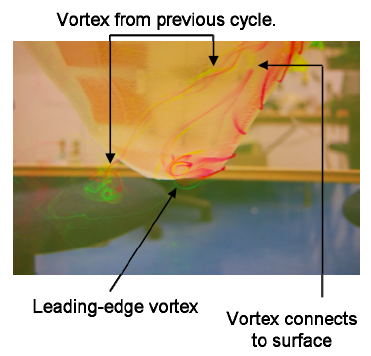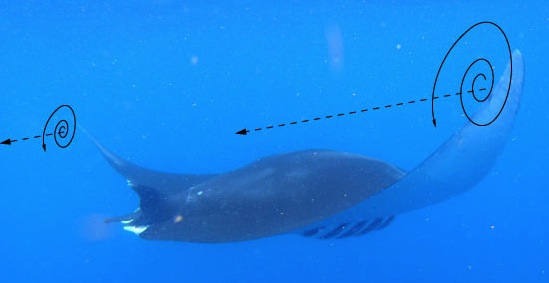1/n In #rays, the pectoral fins are greatly expanded and fused to the head. This forms a broad, flat disc, that can be manipulated to create a variety of shapes.
2/n The wing skeleton is actually composed of many repeating cartilaginous elements. https://faculty.washington.edu/fishguy/Resources/Research_PDFs/2005-stingray-wing-morphology.pdf
3/n Although the range of motion between any two adjacent elements is a mere 15˚, there are enough adjacent elements for the wings to actually touch behind their backs. The wings are literally hinged at thousands of different points.
5/n Rays like in this video move by passing several waves along the fins, i.e. undulation. Think a sinusoidal wave.
6/n The Manta ray in this video swims with a flapping motion much like a bird, i.e. oscillation, with 1 or less waves passing along the wing.
7/N The flapping in Mantas can generate amazing amount of propulsion. The musculature that powers swimming originates toward the center of the ray and inserts onto each consecutively arranged radial.
8/n Each radial acts a cantilevered beam and transfers the force of the muscle to all of the individual skeletal elements. This allows for considerable power.
9/n Imagine trying to move a flexible 4 foot by 8 foot plywood sheet through the water and you can begin to understand the strength this takes.
10/n With this power, a Manta can move almost an entire body length every second. A 15-foot Manta would move at a speed of around 9 miles per hour, nearly double Michael Phelp’s fastest swim.
11/n Mantas are even capable of reaching bursts of 22 miles per hour, twice the top speed of my first used car.
12/n The oscillatory motion of the wings in Manta also creates vortices of water that produce thrust forward.
13/n Manta’s produce special kind of effect called a leading edge vortex. This vortex of water, along the front plane of the manta wing can generate considerable thrust and “suck the wing up.”

 Read on Twitter
Read on Twitter



